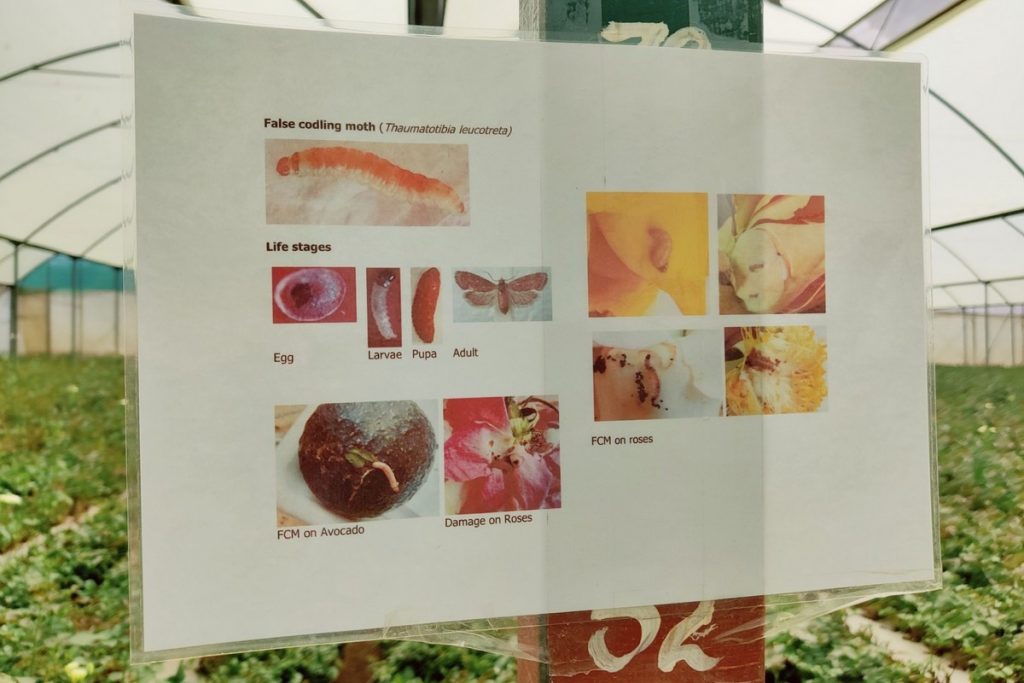A new project initiated to deliver automated and early insights for better control in Kenyan roses.

Rose farmers in Kenya are facing significant challenges due to false codling moth (FCM). Thousands of jobs and a $300 million industry are at risk from this little bug. Growers need improved methods to identify problems early and take quick action if they want to stay ahead.
In order to better comprehend FCM, enhance control techniques, and ease stakeholder management, PATS has partnered with ten rose farms nationwide to use a novel approach using smart monitoring to better understand FCM, improve control strategies, and facilitate stakeholder management.
As an invasive species in Europe, the False Codling Moth (Thaumatotibia leucotreta) is becoming a greater threat to Kenya’s rose industry. Roses make up over 66% of Kenya’s cut flower exports, which are headed for European markets. Inspection rates have grown from 5% to 25% as a result of heightened awareness, which has resulted in expensive inspections, rejected shipments, and even temporary greenhouse closures. In 2024, at least 95 shipments were rejected, with an estimated cost of $1 million. These developments place intense pressure on growers and exporters to improve pest control and demonstrate compliance.

The FCM monitoring project
Since the start of 2025, PATS has partnered with 10 leading rose growers, including Bilashaka Flowers, Vegpro, Nini, and Van den Berg Roses, to roll out PATS-C technology for targeted FCM monitoring. These farms are now continuously capturing high-resolution data on moth flight activity, with the goal of better understanding FCM dynamics and supporting real-time pest management. The project focuses on several key activities:
• Continuous monitoring of adult FCM activity using PATS-C systems across multiple greenhouse zones.
• Data comparison and validation, matching PATS-C results with on-farm scouting data such as egg counts, adult trap captures, and visible crop damage, to evaluate accuracy and inform decision-making.
• Species differentiation and recognition model improvement, through structured experiments that help refine the PATS-C insect profile specifically for FCM.
This approach ensures the solution is not only validated in Kenyan greenhouse conditions, but also optimized to deliver actionable insights to growers working on pest management on a daily basis.
Two objectives to assist growers
The goal of this project is to provide value on two levels. First and foremost, the system ought to give growers access to real-time knowledge and a tool for improving moth pest management, tracking the results of interventions, and promoting more intelligent, environmentally friendly IPM techniques. Second, it should lead to a decision support system (DSS) tailored to FCM that lowers the risk of interceptions and losses by assisting growers in determining whether to halt exporting from impacted greenhouses or when to step up actions.

Considering the future
This project will run for at least a year, with further development depending on progress and user feedback. It is PATS’ goal is to establish a robust, affordable monitoring tool that supports:
• Accurate and prompt pest management
• A decrease in chemical inputs
• Improved risk control, particularly for FCM
• Complete conformity to Kenyan and EU export regulations
By means of controlled studies, the PATS-C insect profile is improved for FCM-specific species differentiation and recognition models. This method guarantees that the solution is customized to provide growers who deal with pest management on a daily basis with useful insights, in addition to being proven in Kenyan greenhouse conditions.
